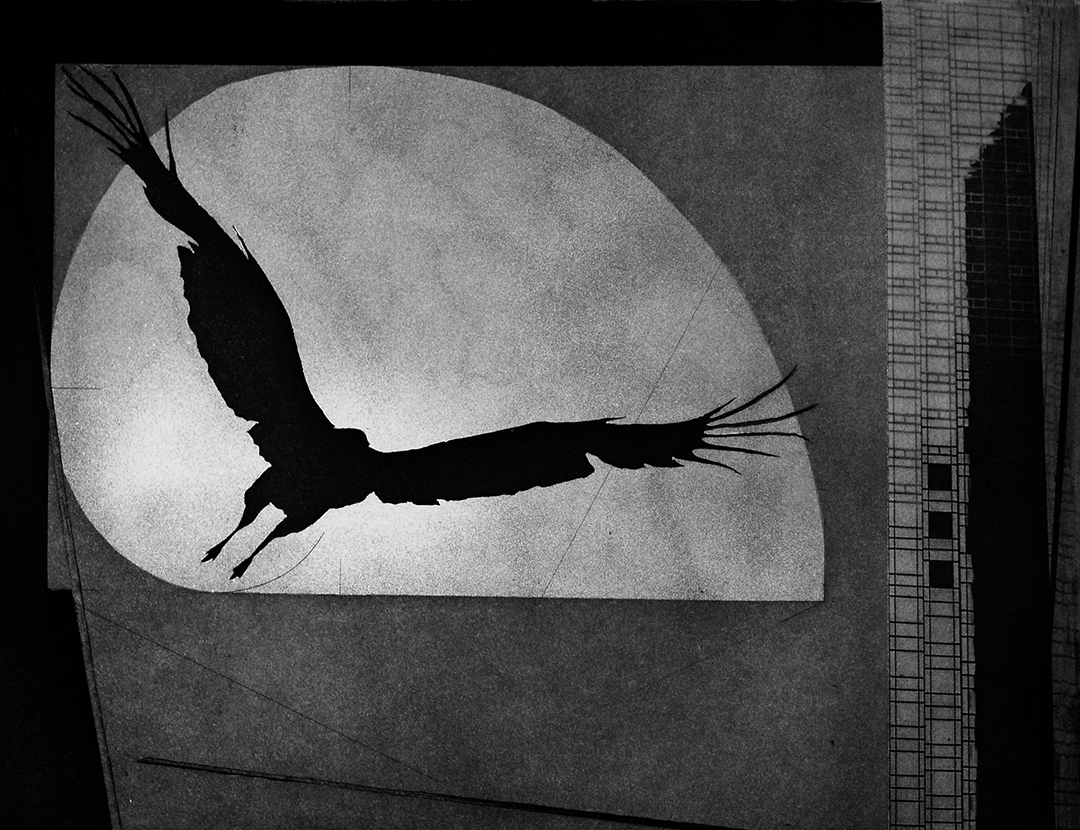Photogravure
This process was developed in the early 1800s. Photogravure enables a photographic image to be converted to an etching, and is one of the finest means of photographic reproduction available. It combines the details of a photograph with the richness of an etching. The image, a photographic positive is exposed to photo-sensitized gelatin tissue, and an aquatint is also applied. This gelatin tissue is then bonded to a copper plate, and the image is developed in water. The plate is then etched in 4-6 different strengths of acid (ferric chloride). The water content of the acid dissolves the gelatin tissue, and the acid then bites the metal. The plate is printed as for an etching. . Photographic and drawn images can also be combined in Photoshop and used here.
Click an image to see in more detail






